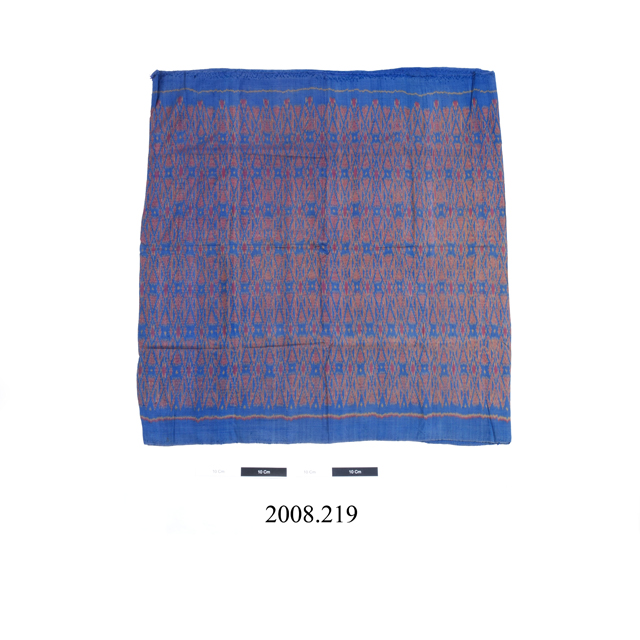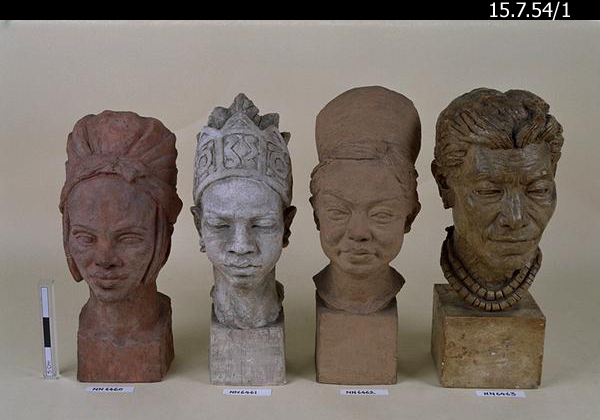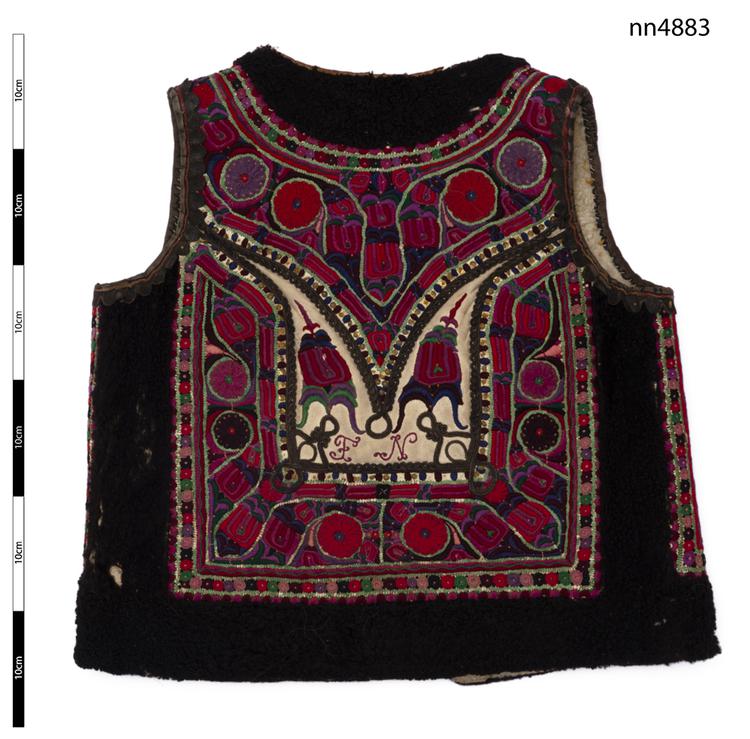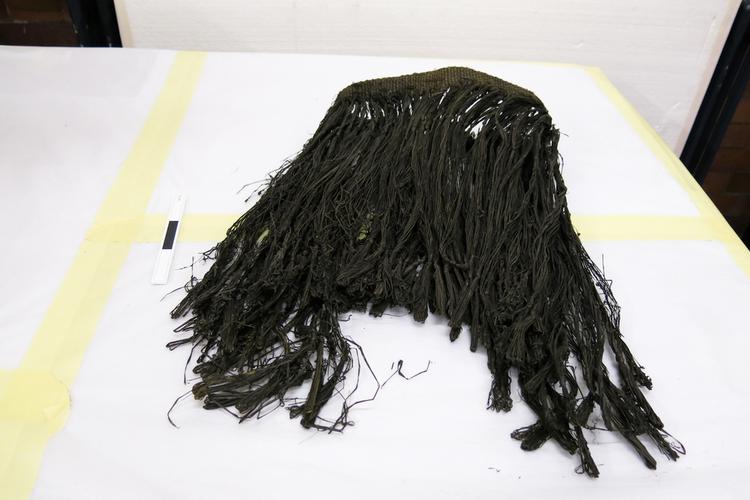Headrest a shallow concave rest on three pairs of legs carved from a single block of hard wood. Each leg is decorated with two ribs and these are stained dark brown.
Southern African headrests frequently defy straightforward classification. This is partly due to the fact that headrests formed part of a woman’s dowry and came into the homestead with endogamous and exogamous marriages alike. Notwithstanding, headrests from KwaZulu-Natal, although decoratively and formally diverse, usually conform to one of a number of types. They often consist of a horizontal crossbar (platform/pillow) supported by a number of legs. Formally, they frequently allude to a bovine. The present headrest appears to fall between two identifiable types, namely those with multiple, approximately rectangular legs and those of the more curvaceous ‘fat-legged’ type. The former’s legs are often carved in relief with flutes, yet the darkened fluting on the present example is broader and rather suggestive of corpulent legs. Headrests are utilitarian in that they preserve the sleeper’s coiffure. They are also intensely personal objects, a kind of ‘extension of the individual’ (Nettleton, 2007, 357), because they make direct and repeated contact with the user, thereby absorbing bodily matter. Importantly, headrests are also linked to the ancestors. Upon the death of their owner, headrests were often broken or buried alongside the deceased. Sometimes they were kept as divination objects – vehicles through which the deceased might be contacted in the realm of the ancestors. See also: Rayda Becker, in Phillips, T., 1995, 206. Sandra Klopper, in Phillips, T., 1995, 207.


































































































































































































































































































































































































































































































































